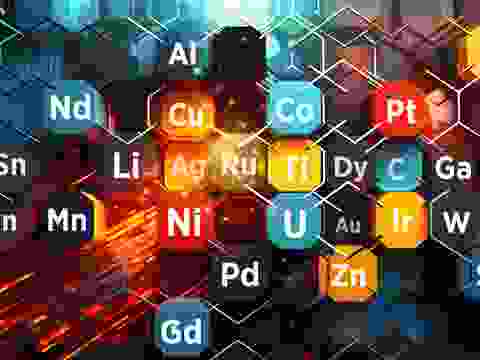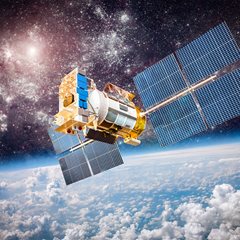Japan–US Rare Earths Agreement
Critical minerals, policy, and the energy transition
28 October 2025
Building Allied Resilience in Critical Minerals
In October 2025, Japan and the United States signed a framework agreement in Tokyo to strengthen cooperation on rare earth elements and other critical minerals. Japanese Prime Minister Sanae Takaichi and US President Donald Trump formalised the deal to reduce both countries’ dependence on China for materials vital to clean energy, defence and advanced manufacturing.
The Japan Organization for Metals and Energy Security (JOGMEC) also signed a memorandum of understanding with the US firm REAlloys Inc. to develop rare earth processing technologies and build joint supply chains. The initiative forms part of a wider strategy to create resilient, allied-controlled networks supported by public investment and coordinated industrial policy.
The official White House framework emphasises that both countries will use coordinated policy tools to secure and diversify rare earth and critical mineral supply. This includes joint financing mechanisms, stockpiling systems, and a new U.S.–Japan Critical Minerals Supply Security Rapid Response Group led by the U.S. Department of Energy and Japan’s Ministry of Economy, Trade and Industry. The framework also commits to accelerated permitting, transparent pricing mechanisms, and new investment vehicles to mobilise private capital into mining, separation and processing projects.
Japan’s vulnerability to Chinese supply restrictions has been evident since the 2010 embargo. Despite diversification efforts, China still refines around 85–90% of global rare earth output and supplies more than 90% of high-performance magnets. Japan continues to rely on China for roughly two-thirds of its rare earth imports, while the United States still depends on Chinese refining for nearly all its separated rare earths.
Both nations recognise that the bottleneck lies not in mining but in processing, separation and magnet manufacturing, where China’s dominance remains entrenched. Early projections suggest that joint projects under the new framework could attract between $2–3 billion in combined public and private investment over the next five years, supported by the US Inflation Reduction Act and Japan’s Green Transformation (GX) initiative.
The two governments also plan to identify joint projects across the value chain, from mine development to magnet production, and will convene a bilateral ministerial meeting within 180 days to coordinate investment priorities.
The real power lies in technology, processing and private-sector integration
The defining feature of the Japan–US rare earths partnership is its shift from raw-material sourcing to joint industrial capability and technology integration. This cooperation aims to rewire the rare earth supply chain by combining Japan’s precision processing and magnet fabrication expertise with America’s resource base and scale-up potential.
Japanese firms such as Shin-Etsu Chemical, Hitachi Metals and Sojitz bring decades of experience in rare earth separation and magnet fabrication. On the US side, MP Materials and Lynas Rare Earths are expanding domestic processing and magnet-production capacity, supported by government backing. The JOGMEC–REAlloys MoU functions as the structural link between these ecosystems, enabling technology transfer and coordinated investment.
Chinese firms continue to dominate the global permanent magnet industry, particularly in the production of high-performance magnets such as neodymium-iron-boron (NdFeB) and samarium-cobalt (SmCo). These magnets are essential for electric vehicles, wind turbines, robotics and defence technologies — the foundation of the global energy transition.
China’s advantage stems from its fully integrated value chain, controlling every stage from mining and oxide separation to alloying, sintering and magnet fabrication. This control allows Chinese producers to manage cost, quality and availability, setting global benchmarks and maintaining downstream leverage.
Japan remains one of the few nations outside China with deep magnet technology expertise. Firms such as Shin-Etsu Chemical and Hitachi Metals pioneered core NdFeB and SmCo technologies and continue to lead in advanced materials engineering. The United States, by contrast, has limited magnet manufacturing capacity, making this partnership an attempt to rebuild industrial capability from midstream processing through to finished magnets.
Magnet production is therefore the true strategic bottleneck in the rare earth value chain. Securing ore and refining capacity is necessary but insufficient, as without competitive magnet manufacturing allied nations will continue to rely on Chinese output at the most value-added stage. The Japan–US partnership directly targets this weakness, aiming to expand non-Chinese processing, transfer magnet technology and build a reliable rare earth supply chain for critical sectors.
Private-sector participation will be critical. Trading houses, technology companies and automotive manufacturers are expected to form joint ventures or sign long-term offtake agreements to stabilise rare earth magnet and alloy supply. This integration is intended to move both economies up the value chain, from mine to motor, while reducing dependence on Chinese components.
Commercial success, however, will depend on cost competitiveness. Chinese producers continue to benefit from high integration, state backing and lighter regulation, keeping production costs lower. Unless allied partners achieve similar efficiency and scale, operations risk remaining strategically symbolic rather than commercially viable.
The industrial scope of this partnership marks a turning point: it transforms rare earth diplomacy into shared manufacturing and technological cooperation, setting a benchmark for future collaboration across the critical minerals sector.
Success depends on execution, cost control and strategic consistency
The agreement aligns with broader Indo-Pacific frameworks such as the Quad Critical Minerals Initiative, linking Japan’s industrial capacity with resources from Australia, North America and India. It also deepens Japan’s strategic alignment with the United States amid intensifying competition with China.
Technology transfer is central to this strategy. Japan’s leadership in refining and magnet manufacturing allows it to influence global standards, while the United States contributes scale, investment and market leverage. For investors and policymakers, the most attractive opportunities lie in midstream and downstream projects where value creation is highest.
Japan is also pursuing domestic resource development, including plans to test-mine rare-earth-rich seabed mud near Minamitori Island in early 2026. This dual-track strategy of international partnership and domestic exploration aims to enhance supply security while capturing greater value within Japan’s industrial base.
The agreement’s non-binding nature reflects a policy framework rather than a treaty, but it carries programmatic commitments for coordinated investment, project selection and regulatory reform.
Execution remains the defining variable. The agreement still lacks clarity on project timelines, financing mechanisms and regulatory coordination. Delivery will depend on political resolve, consistent funding and cost discipline.
The Japan–US rare earths agreement represents a decisive step in redefining global mineral strategy. It moves beyond access to resources toward industrial sovereignty and supply chain control. If executed with discipline, it has the potential to rebalance influence over rare earth production and establish a durable model for allied cooperation in critical minerals.
The US–Australia rare earths deal
In parallel with the Japan–US framework, Washington and Canberra have advanced a new bilateral arrangement focused on securing and processing rare earths and critical minerals. The agreement, signed in October 2025, formalises cooperation between the United States Department of Energy and Australia’s Critical Minerals Office to align policy, investment and project development across the supply chain.
The United States recognises Australia as its most reliable upstream partner for rare earths and battery metals, given Australia’s geological endowment and transparent regulatory environment. The framework supports joint funding mechanisms through the US Inflation Reduction Act and Australia’s Critical Minerals Facility, encouraging co-investment in extraction, refining and intermediate processing.
Australia’s strength lies in mining and early-stage separation, with projects such as Lynas Rare Earths, Iluka Resources and Arafura Rare Earths forming the foundation of allied supply. The new deal aims to expand this base by developing midstream processing and magnet manufacturing capacity in Australia, allowing a larger share of value to be captured domestically while feeding allied markets.
For the United States, the partnership complements its agreements with Japan by creating multiple nodes of resilience: Japan contributes technology and downstream expertise, Australia provides raw materials and processing capability, and the US anchors demand and capital. Together, these frameworks begin to form an integrated trusted-supply network spanning mining, refining and advanced manufacturing.
The success of this trilateral alignment will depend on synchronising standards, financing and logistics to ensure interoperability between allied partners. If executed effectively, the Australia–US partnership will reinforce the Japan–US agreement, creating a distributed but coordinated industrial base for critical minerals that can withstand market shocks and geopolitical tension.
The emerging US–Malaysia framework
The United States strengthened its rare earths and critical minerals outreach during the same October 2025 trip that included visits to Japan and Australia. In Kuala Lumpur, Washington and Malaysia signed a memorandum of understanding on rare earths and critical minerals during the ASEAN summit, expanding cooperation on processing, recycling and sustainable supply chains.
Malaysia holds an important position in global rare earths production and processing. It hosts Lynas Rare Earths’ separation plant in Kuantan, the only major rare earth processing facility outside China, and is developing new refining and advanced materials capacity. For the United States, Malaysia offers an established industrial base within a stable regional economy, providing a strategic link between Australian mining projects and manufacturing markets across Asia.
The Malaysia–US rare earths framework is an early-stage cooperation rather than a full industrial alliance. It is non-binding and focuses on policy coordination, technology transfer and higher environmental standards, not fixed investment or exclusive supply contracts. Its objective is to attract allied investment into Malaysia’s refining and recycling capacity while aligning with US standards for transparency, traceability and responsible sourcing.
For Washington, the agreement deepens its Indo-Pacific rare earths strategy by building a cooperative processing hub in Southeast Asia. For Malaysia, it reflects the ambition to move further down the rare earths value chain and capture greater industrial value while maintaining an open and diversified trade policy.
If successfully implemented, the Malaysia–US partnership could become the Southeast Asian centre of the allied rare earths supply chain, complementing Japan’s technological leadership and Australia’s resource base. For now, it remains a policy foundation for future projects that aim to strengthen non-Chinese rare earths supply and improve resilience across the critical minerals ecosystem.
The US–Thailand Rare Earths Framework
As part of the same October 2025 diplomatic tour that produced new agreements with Japan, Australia and Malaysia, the United States also reached a framework arrangement with Thailand on rare earths and critical minerals. Signed during the ASEAN summit in Bangkok, the agreement extends cooperation to regulatory alignment, technology exchange and investment promotion in rare earths and related supply chains.
The Thailand–US rare earths framework is embedded within a broader trade and economic partnership that also covers tariff reduction and industrial collaboration. It aims to strengthen cooperation in sustainable mineral development, processing and recycling, helping both countries build capacity across the critical minerals value chain. Thailand is positioning itself as a future logistics and processing centre for the region, drawing on its established manufacturing base, expanding electric vehicle sector and geographic access to Southeast Asia’s mineral corridor.
For the United States, the framework adds another link in a widening Indo-Pacific rare earths strategy that connects Australia’s mining capacity, Japan’s technological leadership and Malaysia’s processing expertise. It encourages US and allied firms to explore opportunities in exploration, refining and advanced materials manufacturing in Thailand, though concrete project timelines and investments have not yet been disclosed.
Like the Malaysia framework, the Thailand agreement is non-binding and represents an early stage of cooperation rather than a full industrial alliance. Its purpose is to coordinate policy, promote environmental and governance standards and attract private investment into Thailand’s emerging rare earths processing and magnet materials industries.
For Washington, the deal consolidates its critical minerals presence in Southeast Asia. For Bangkok, it supports the government’s “New S-Curve” industrial strategy, which seeks to expand into high-technology and green manufacturing. While still at a preliminary stage, the US–Thailand rare earths framework strengthens regional diversification and underlines the shared objective of reducing global dependence on Chinese rare earth processing and magnet production.
The US–Vietnam Rare Earths Framework
The United States also signed a rare earths and critical minerals cooperation framework with Vietnam during its October 2025 Southeast Asia trip. The announcement followed meetings between US and Vietnamese officials aimed at strengthening trade, supply-chain resilience and strategic investment in critical materials.
Vietnam holds some of the world’s largest rare earth reserves and has been identified as a key long-term supplier for allied nations seeking to diversify away from China. However, its current production and refining capacity remain limited, and large-scale industrial development is still in the planning stage. The US–Vietnam framework seeks to accelerate this process by promoting exploration partnerships, technology transfer and private investment into Vietnam’s rare earth sector.
The agreement focuses on policy alignment, technical cooperation and responsible sourcing standards rather than binding investment or exclusive supply contracts. It encourages US firms to participate in exploration and midstream projects alongside Vietnamese partners, with a particular emphasis on transparent governance and environmental standards.
For Washington, the framework strengthens engagement with one of Asia’s most resource-rich and strategically positioned countries, expanding the rare earths network beyond established allies such as Japan and Australia. For Hanoi, it represents an opportunity to advance domestic industry, attract international capital and build technical capability in refining and magnet material production.
Although early in development, the US–Vietnam rare earths framework adds another piece to a growing Indo-Pacific network of supply-chain cooperation. If implemented effectively, it could help position Vietnam as a credible future supplier within a diversified and resilient rare earths ecosystem that supports allied industries.
A new allied architecture for rare earths
The Japan, Australia, Malaysia, Thailand and Vietnam frameworks together form an emerging allied architecture for rare earths and critical minerals. They connect trusted partners across the Indo-Pacific, linking mining, refining, magnet production and recycling into a coordinated system.
China retains structural dominance over refining, separation and magnet manufacturing, shaping the economics, technology and flow of global supply chains. The Japan–US partnership seeks to erode that advantage by building non-Chinese processing capacity, advancing magnet technology and creating a more secure rare earth supply for critical industries.
The contest over rare earths will be decided by delivery, not diplomacy. Only sustained investment, industrial execution and technological depth will determine whether these alliances evolve into a genuine alternative or remain aspirational. The defining question is whether allied cooperation can match China in cost, capability and control of the value chain.


Critical sectors affected




Meet the Critical Minerals team
Trusted advice from a dedicated team of experts.

Henk de Hoop
Chief Executive Officer

Beresford Clarke
Managing Director: Technical & Research

Jamie Underwood
Principal Consultant

Dr Jenny Watts
Critical Minerals Technologies Expert

Ismet Soyocak
ESG & Critical Minerals Lead

Thomas Shann Mills
Senior Machine Learning Engineer

Rj Coetzee
Senior Market Analyst: Battery Materials and Technologies

Franklin Avery
Commodity Analyst
Brought to you by

Jamie Underwood
Principal Consultant

How can we help you?
SFA (Oxford) provides bespoke, independent intelligence on the strategic metal markets, specifically tailored to your needs. To find out more about what we can offer you, please contact us.












